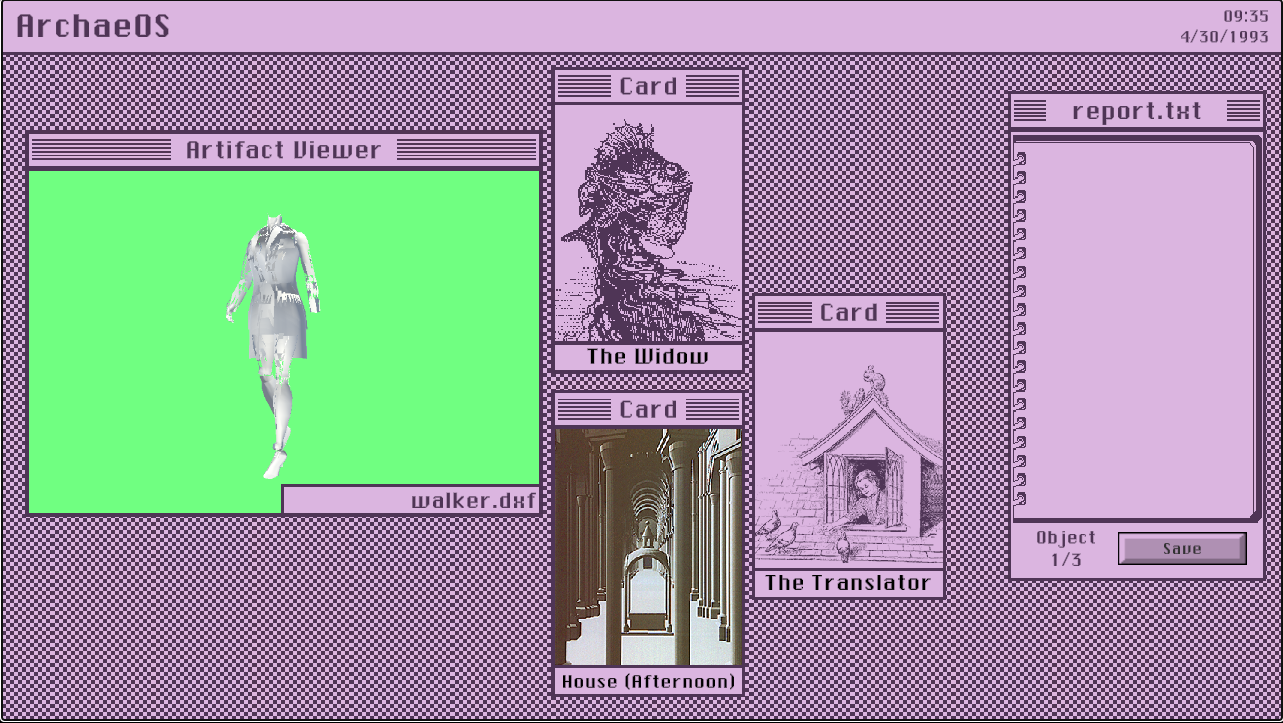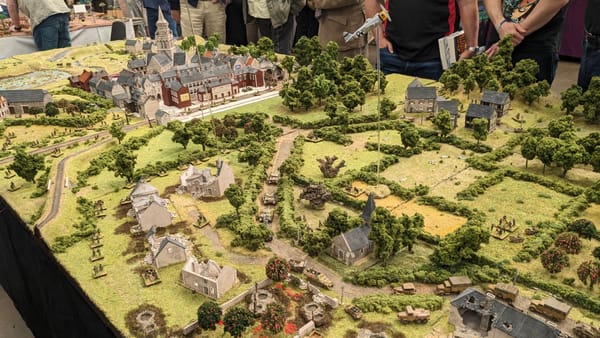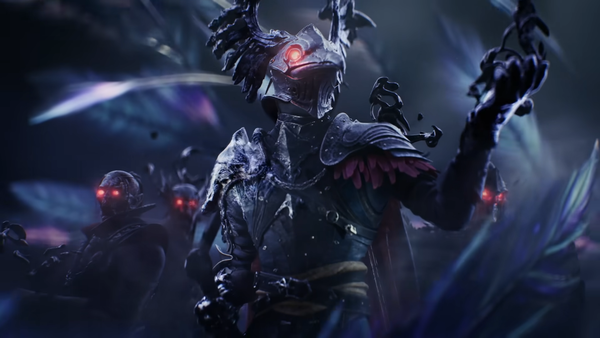I interpreted rare digital artifacts in ArchaeOS, and all I got was this cool zine
Collaborative, open source jpeg preservation simulator.

It is 1993, and I have arrived at the archive. Here rests the only surviving records from the Domus Silica, a 19th-century, pre-internet computer landscape. The archive has granted me, a pilgrim, admission to the database and its interpretive tools so that I may theorize on the meaning and provenance of three precious .dxf files. I do so, recording my impressions into a report. I am quiet the entire time because the archivists warned me that “the objects can hear you.” Afterwards, I leave. Both the archive and myself are more complex in the parting.
”The statue differs from its marble cousins in both obvious and subtle ways. Scholars posit that the head has been intentionally removed to symbolize a great loss…The figure’s environment is a juxtaposition, ill-fitting, and speak to a further loss (or losing) of safety and comfort to inexorable change.” – The Pilgrim, 04/29/1993
This is ArchaeOS, a digital game by developer and video game archaeologist Florence Smith Nicholls and researcher Mike Cook. Created for the 2025 DiscMaster Jam, the game uses only assets found within the eponymous and very weird search engine, which allows users to browse all kinds of data hosted on the Internet Archive. After loading up the aggressively early-90s operating system, the player is served three casually spinning polygonal objects and a constant stream of some of the most sweeping museum music I’ve ever heard. It is extremely marble floors and domed roofs.
The reason that I’m writing about a digital game here is twofold: one, ArchaeOS downloads a play report including all of your notes that can be printed and folded into an eight-page zine. Secondly, the structure of play follows so many other solo RPGs: three cards from an in-universe tarot deck are dealt with each artifact and serve as the player’s only interpretive aide. They must write an entry based on vibes, intuition, and a healthy amount of imagination. There are no wrong answers, only what the player brings to the table. A world thus sprouts from the holes and cracks.
This is a dang journaling RPG!





